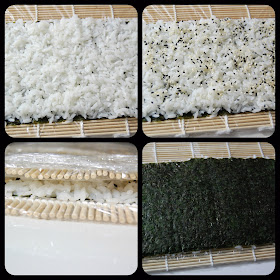The 59th Galway International Oyster & Seafood Festival will take place this weekend. It's the most internationally recognised festival in Ireland after St Patrick's Day attracting visitors from all over the world. Here's an oyster recipe with a Japanese twist to celebrate this wonderful festival.
Ingredients:
10 shucked and cleaned fresh oysters
150ml ice cold water
1 egg yolk
100g flour (sieved)
1 egg yolk
100g flour (sieved)
Half tsp corn flour (sieved)
Handful of ice-cubes
Seaweed (to garnish)
Lemon wedges and sea salt (serve on the side)
Vegetable oil (for frying)
Vegetable oil (for frying)
Instructions:
1. Gently wash the oysters and pat dry with kitchen towel.
2. Place enough vegetable oil in a heavy base saucepan to be able to deep fry the oysters.
3. Line a plate with kitchen towel as this will be used to absorb the excess oil from the tempura.
4. Place the egg in a medium size bowl and beat using chopsticks or whisk. Pour the ice cold water into the bowl and mix with the egg.
1. Gently wash the oysters and pat dry with kitchen towel.
2. Place enough vegetable oil in a heavy base saucepan to be able to deep fry the oysters.
3. Line a plate with kitchen towel as this will be used to absorb the excess oil from the tempura.
4. Place the egg in a medium size bowl and beat using chopsticks or whisk. Pour the ice cold water into the bowl and mix with the egg.
5. Add the sieved flour and corn flour to the
water and egg. Mix lightly leaving small lumps in the mixture (at
this stage you could sit the medium sized bowl filled with the batter
into a larger bowl filled with ice and water to keep the batter cold).
6. To check the oil is hot enough, drop a small bit of
batter into the oil and if it sizzles up quickly to the top then the oil temperature is ok.
7. Gently dip the oysters (one at a time) into the batter, shake off the excess batter and
place in the oil.
8. Only fry a few pieces in the oil at the time to ensure that the oil temperature remains hot. The pieces should be turned only a few times until they have a nice light golden colour. This usually takes a few minutes.
8. Only fry a few pieces in the oil at the time to ensure that the oil temperature remains hot. The pieces should be turned only a few times until they have a nice light golden colour. This usually takes a few minutes.
9. Place the oyster tempura on your prepared plate lined with kitchen towel to absorb the excess oil.
10. Serve in the oyster shell topped with seaweed. Season with freshly ground sea salt and lemon wedges.
Tips:
Tips:
- To get a light and crispy tempura batter the oil temperature should be hot and the batter very cold.
- Do not over mix the batter, lumps are ok in the batter
- Do not over mix the batter, lumps are ok in the batter
- Before preparing the batter make sure everything else is ready so you can use it immediately.
To get some useful tips on buying, preparing and cooking oysters at home go to Clogadh McKenna's Guide To Oyster's.
















